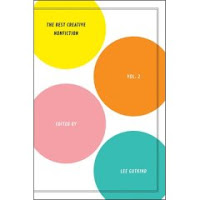
Creative Non-Fiction is the newest genre in Literature. Last year this was the favorite unit of many of my seniors. Two of my seniors even went on to declare a Creative Non-Fiction major in college. I worked over the summer break last year to make it even better and am excited to share it with you.

First we begin with a cornerstone article about what it is. The 5 R’s of Creative Non-Fiction By Lee Gutkind is an interesting read. I've also put together some questions to help focus your reading.
As a side note: In the article Mr. Gutkind writes about a heart lung transplant. I believe that a longer set of essays on this topic comes from his book Many Sleepless Nights. I am trying to get a copy of that book to share some of those essays with you. If you want to read more of his outstanding writing, you can check out his website for a list of books, news and interesting information. You can also check out the Creative Non-Fiction Journal to find more great stories.

The 5 R’s of Creative Non-Fiction By Lee Gutkind
Comprehension Questions
1. What is your response to paragraphs 1-4 and 6-8?
2. What does the author mean when he uses the term “fly-on-the-wall” or “ living room sofa” concept of immersion?
3. Use your own words to describe what the author means when he uses the term, “immersion journalism”.
4. Read paragraph #12 * (“The other phrase…) to get a sense of what he means when he uses the term, “creative non-fiction”. Make a bulleted list that explains what creative nonfiction is according to this description:
5. Explain what Gutkind means when he writes about “’immersion’ or ‘real life’ aspect of the writing experience.” R1 = Real life)
6. What is reportage and how does it relate to creative nonfiction?
7. The R2 is reflection. Whose reflection are we talking about? Why is it important?
8. The is R3 research important? Why or how is it used in creative nonfiction?
• How does is launch and anchor the creative process?
• Why research? What is the benefit?
9. The R4 is reading? What kind of reading should be done? Why?
10. Explain the two phases of R5, writing
• Phase #1:
• Phase #2:
11. Why are vignettes important in creative nonfiction?
12. Explain the importance of the following elements of a scene:
• Action –
• Dialogue –
• Intimate and specific details –
13. What does he mean when he says, “The frame represents a way of ordering or controlling a writer’s narrative”?
• How do flashback figure into framing and storytelling?
14. Explain who the following people are and how they are connected: (Do this one carefully, many people get this question wrong.)
• Richie Becker –
• Dave and Winkle Funk –
• Pvt. Rebecca Treat –
• Dr. Bartley Griffith
No comments:
Post a Comment